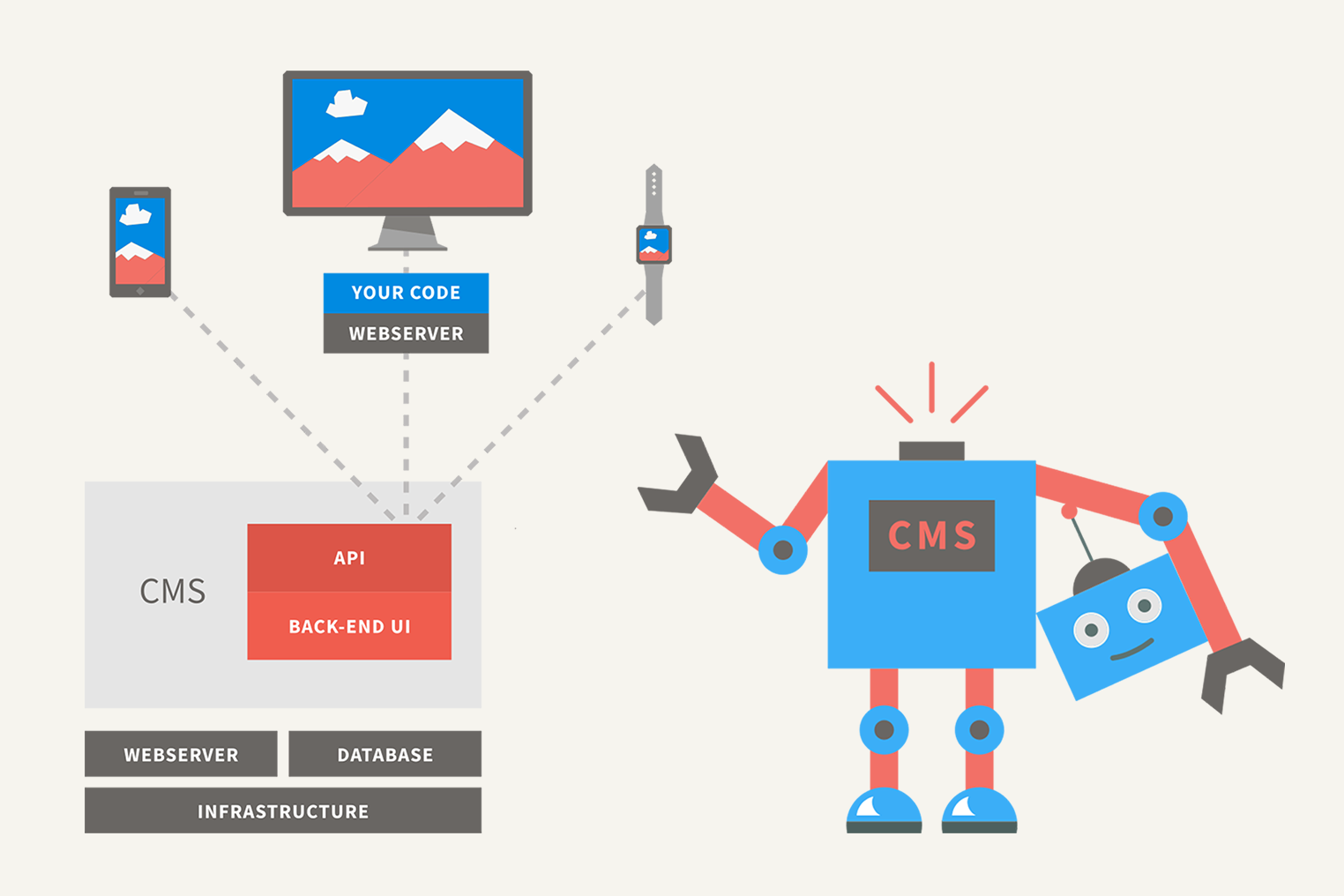APIs are what link the content of a headless CMS to the many frontend applications that request that content. Yet, poorly managed APIs can become performance roadblocks in no time that complicate the end-user experience and overall application performance. Thus, to mitigate content loading slowdowns and maximize user interactions, it’s essential to identify and troubleshoot API-driven performance roadblocks early on. This article will explore how to relieve performance roadblocks in a headless CMS via an API approach to facilitate better digital experiences that are productive and performance at scale.
Identify and Monitor API Bottlenecks
To successfully eliminate bottlenecks, organizations must engage in API performance monitoring and analytics. Effective performance monitoring will pinpoint where APIs are lagging, which queries are particularly resource-intensive, and more. By carefully tracking response, error, and resource generation, developers can understand what’s happening with their APIs over time and in specific instances. For platforms aiming to be the best ecommerce CMS, maintaining high API performance is critical to ensuring seamless shopping experiences. Armed with this information, developers can identify API performance patterns and adjust those that are trending negatively before they become catastrophic failed API bottlenecks from the end user’s perspective.
Optimize Database Queries and Indexing
Whether remote or local, sensitive databases of ineffective database queries present major API bottlenecks. Generally speaking, the less time an API needs to spend creating database responses, the better. Therefore, reduce database joins where necessary, eliminate redundant joins that complicate queries, reduce query lengths, and ensure targeted/effective data retrieval. Likewise, if there are specific fields that are commonly queried or known data relationships, effective indexing reduces time spent locating fields and data within databases. This type of refinement increases application responsiveness by reducing lags through effective content presentation.
Implement Caching Effectively
APIs suffer from bottlenecks when they become inundated with the same requests. To prevent duplicate processing across multiple servers when content can be generated more quickly, caching select responses can be helpful. Caching is most effective with server-side caching, client-side caching, and edge caching (Content Delivery Networks). Understanding which works best can help enhance cache retrieval times. Additionally, with more dynamic content, cache invalidation sending caches to expire on a timer can ensure freshness without generating lag problems. Therefore, by using these techniques to eliminate bottlenecks, customer experiences are enhanced.
Implement Pagination and Data Filtering
The bigger the data sets APIs return, the more they disrupt performance and create massive bottlenecks. Therefore, developers must efficiently implement pagination and data filtering options to minimize payloads and increase responsiveness. For example, many APIs need to be adjusted to return smaller packet sizes that are more manageable instead of information overloads. With clients receiving only what they need to know, the functionality of an API increases with lower latency, allowing for faster, easier, and more effective content delivery.
Use GraphQL for More Precise Data Requests
APIs developed from REST are incredibly helpful; however, they may fall short in some situations when it comes to performing efficiently. Developers should turn to GraphQL to help reduce the number of bottlenecks as it allows developers to give clients the option to request only the precise data fields they need. When interfaces communicate with GraphQL, this reduces the amount of data transferred and processed on both sides (client and server). Furthermore, by using GraphQL, developers avoid unnecessary resolutions of fields and database queries. When integrated into headless CMS, latency decreases and flexibility increases, improving performance and scalability.
Use a Microservices-Based Architecture
Instead of creating one giant API that does everything under the sun, developers should downscale their systems using a microservices-based approach. Smaller APIs avoid overload opportunities and ultimately provide faster responses with reduced duplication efforts. Microservices allow for clarification of responsibilities as each can hold its own domain or type of content. This minimizes unnecessary interactions and allows for quicker turnaround efforts. The more developers can package away an API project, the easier it is to optimize systems for rapid deployment, whether in low traffic or high traffic virtual environments. Using a microservices-based approach avoids bottlenecks for developers and clients alike while increasing flexibility and sturdiness.
Ensure APIs Have Lightweight Payloads
Less is more where API payloads are concerned; payloads should be as lightweight as possible to encourage less latency and increased responsiveness. Developing APIs that send only the fields required means data can render much faster. Furthermore, many APIs can reduce their payload size through gzip compression, using lighter formats like JSON vs. XML, and by not sending fields that are empty or null. The less payload there is to transmit, the easier it is to process. When payloads are lightweight, transmission time and processing needs are drastically reduced, and many of the reasons for API bottlenecks are avoided so users can interact with the API seamlessly and quickly.
Implement Rate Limiting and Throttling
Abuse of an API happens regularly; when too many requests go through (or an API is used inappropriately), the server can easily become overwhelmed. One of the simplest ways to protect an API from degradation is by implementing security measures that limit the rate at which information is requested and throttle items as they come in. Rate limiting avoids the API from being overloaded while also ensuring fair use practices among different clients. It allows the API to regulate itself without the need to completely collapse during stressful situations, as a little prevention can go a long way before resources get depleted completely.
Use Load Balancing to Scale an API’s Infrastructure
Load balancing takes the incoming request workload and splits it across various servers (or instances). To ensure that one particular server is not overwhelmed with requests beyond its capacity, load balancing effectively directs where a request should go based upon server capabilities, performance, uptime, and current load. When done properly, scaling is not an issue, as the load balancer directs requests to ensure that no one endpoint is pushed harder than it can take to remain resilient. This means consistent response times and better overall system reliability over time even when demand increases.
Reduce Latency by Utilizing Edge Computing
Edge computing puts content closer to the endpoint. Global access occurs with reduced latency due to dynamically routing requests through an extensive network of globally dispersed servers. With APIs within an edge computing ecosystem, users receive content with increased speed and fewer points of potential disruption. Should someone in China request an API through a site hosted in New York, edge nodes respond to the API request for content in the location that makes the most sense, generating increased reliability and quicker response times even for those with an international audience.
Stress Test Your API Regularly
Stress testing is an option for teams to create artificially generated high traffic situations to assess how the API performs under pressure. Thus, the organization can avoid performance-destroying problems before they exist. Stress testing challenges an API with different factors to identify traffic thresholds, access failures, resource restrictions, and responsiveness. Stress testing regularly enables developers to correct problems with resource management, caching, and query response to remain reliable instead of rolling the dice to see if it works with your desired volume post-deployment.
Performance Analytics Keep Everything Regularly Adjusted
Regular analysis for optimization eliminates bottlenecks. When teams have access to performance data, they can learn how users engage with the API, how frequently calls are made, what is accessed vs. what is created, providing a clear path for improvement. For example, knowing how frequently and what type of API calls are made can help the team improve caching strategies, assess ideal payload dimensions, and make database query efforts more effective. When analytics allow for new understanding, organizations using these adjustments will have consistent seamless operation of their APIs which regularly remove points of potential failure.
Reduce API Endpoints with Front End Specific Needs
Reducing API endpoints with front end specific needs minimizes over-fetching and enhances efficiency. Such well-built APIs will need smaller, specific endpoints to get only the relevant information. This minimizes turnaround time and workload on the API side as well, as less processing power is needed for lighter, better trained queries. Well-constructed endpoints avoid heavy acquisition requests which only bog things down further on either side. Well-thought-out creations keep the API light and easy, meaning anticipated deliveries across respective media can occur effectively.
Synchronous Process Loading vs Asynchronous Process Loading
Loading information in relative blocks but delegating things that require heavy processing to asynchronous loading opportunities means improved API turnaround times and less chance of in-process log jams. If every piece of information is processed synchronously through one API call, some requests are better deferred for asynchronous background processing as that improves real-time operations without overloading the API. Allowing for this defers more intensive processing to be done behind the scenes, allowing what’s absolutely necessary in the moment to process sooner. This contributes to a better user experience because no functionality is frozen while awaiting an answer to something much heftier than what was initially requested.
Use a CDN for All Static Assets
One of the best ways to reduce API bottlenecks is to utilize a CDN. CDNs host and serve static content and assets through multiple servers across the globe. A CDN caches static resources that are often requested, images, videos, JavaScript, CSS and serves them from edge locations on the CDN rather than a main server. This saves bandwidth and depletes server requests, improving response time and performance while keeping the API working quickly with no demand on the back end for things it doesn’t need to house itself.
Conclusion
API bottlenecks are a common occurrence within a headless CMS infrastructure, and relieving them is essential to maintain fluid operation of responsive digital experiences at a time when more and more companies rely upon effective content delivery for customer demands. Companies that seek to eliminate such a problem and keep themselves on the right track for solving potential problems down the line should engage in a solution process that involves continuous performance assessment, database optimization, caching, and payload efforts.
First, performance assessment is done all the time, in real time, which allows developers to better understand if an API is working effectively, where it’s slowing down, what queries may be overly complicated, or even what spikes in access or response delay times can detail to diagnose lingering issues before they affect end-users. Performance dashboards and similar performance monitoring tools can show developers, via tracking, where adjustments can be made before it becomes too late. Second, database optimization minimizes API bottlenecks because many slow API requests are generated from bad database execution or design. When the API relies on a database for which queries take time to run, latency is compounded. Therefore, database optimization efforts include indexing database tables/columns that are frequently used, reducing unnecessary joins (by splitting application logic), and reducing complex quick solutions by restructuring logic to refinements.
Periodic checks of the database use will allow for continuing improvements in performance and reliability of the API. Third, frequent caching is one of the easiest ways to reduce stress on a server that is constantly receiving repeated requests from users. When information that is being requested is already available on the server-side cache, client-side cache, or available through CDN edge caches, the processing delay from the API can be bypassed. Caching reduces latency and allows for increased reliability much faster. Similarly, proper payload management minimizes bottlenecks. By ensuring that APIs only send back what’s necessary, compression techniques, aggregate responses, and optimized data formats work to reduce response sizes and processing efforts at the API level.
Finally, agencies should utilize technologies that exist to help avoid such problems in the first place. GraphQL avoids over-fetching or under-fetching; containerization microservices architectures allow for diverse loads across multiple services instead of a monolithic load; load balancers can ensure that all available services/cloud features get utilized at the right space and in the right time; and edge computing ensures that the content can be served quickly regardless of where geographically an audience is located. Ultimately, all of these considerations and implementation efforts should be realized every so often to ensure optimal performance on a regular basis based on cumulative analysis over time. Continuously mitigating API bottlenecks through assessment and implementation allows for reliable and scalable digital experiences when proper content delivery performance is achieved through proactive mitigation efforts for customer satisfaction and continued digital satisfaction going forward.










